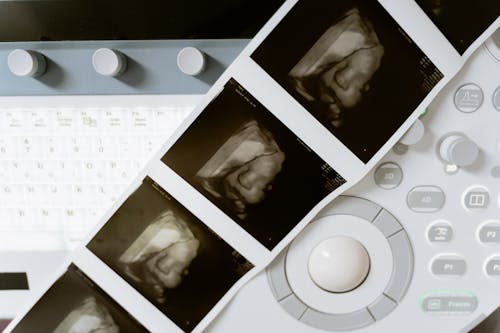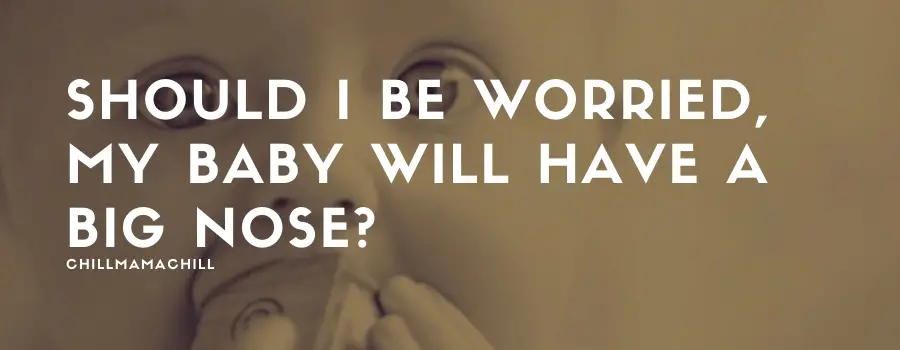A newborn comes into this world all puffy and bluish, seemingly as though they’ve fought the fight of their life. Your child’s physical features might surprise you, not exactly the picture-perfect cherub you’d hoped for. But given that this first look is temporary; should I be worried, my baby will have a big nose?
When in your uterus, and during delivery, your baby’s nose, made mostly of cartilage, gets squished up. In the womb, your unborn child’s face is probably pushing against the walls and amniotic fluid, appearing huge and distorted in ultrasound scans. But that’s not the final product, even if it’s still looking large at birth. All that should get back to normal within a week or two.
The nose is one of the facial features that your baby gets from either your or your husband’s side of the family. It’ll have been passed down for generations, so you don’t have to look too far for possible similarities. Quell your worry about your baby’s seemingly large breathing apparatus. Keep reading for tips on distinguishing how it’ll finally end up looking like.
Why Does My Baby’s Ultrasound Image Show Such a Big Nose?
You typically started asking yourself questions about your baby’s appearance the first time you saw the 3D ultrasound pictures. Your unborn tot’s nose looks big, but the truth is it’s distorted by the sound waves used for this innovative technology to work.
Here’s a bit of background information to help you understand 3D ultrasound scans distorting your baby’s nose image. The technology works around emitting sound waves. These bounce off solid objects the same way bats or dolphins use eco location. When received back, images are created out of wave contours, and your baby’s form is displayed.
The difference between 2D and 3D is how the surface is captured. Earlier ultrasound scan technology needed the technician to chase the fetus around for a clearer picture. Today’s scans produce a full-bodied image as your baby’s features, seen at three 90° planes.

Some of your unborn baby’s features, however, are smooth and small. These don’t give sound waves a lot to bounce off of. To compensate for this lack of viable surfaces, some image sections will broaden. Such technical globs would make you wonder if your baby will have a big nose. The technology is getting better, but that serves as a reminder that a scan’s main aim is to detect fetal abnormalities.
Is My Baby’s Nose Shape Due to Inherited Genes?
Your baby’s nose has a shape like yours or your partner, or maybe a combination of both. Scientists concluded that your child’s facial features are 66% passed down through genetic chromosomes for generations. If a broad nasal appendage is a dominant trait in either you or hubby, that’s the shape that’s going to be plastered on your tot’s face.
Genetics is a mind-boggling subject, one that’s even genetic researchers have yet to fully understand. It’s not known what genes play a role in your baby’s nose shape or size. That’s because of gene carriers, parents who may exhibit a broad-nosed trait but will pass on a narrow one to their siblings.
Each parent has two copies of a gene that determines how the baby’s nose will look like. Variables start to appear due to the randomness with which one copy of these genes will get passed. For simplicity’s sake, think of just two traits, broad and narrow as expected nasal shape.
Most likely, you have a narrow nose. Therefore, you’ve got two recessive alleles of nasal shape genes. Your partner, with his broad one, has either two dominants, two recessives, or a pair of both.
Your baby will have the dominant broader nasal cavity variety or will get your husband’s recessive gene, ending up with a narrow nose. That’s to say there’s a 50-50 chance for each of your children to either take after your or your partner’s nose-shape traits. It’s a bit more complicated than that, as all genetics is, but that’s a structured way to think about it.
How will the Size and Shape of My Baby’s Nose Be Weeks after Birth?
According to Kings College London’s professor Giovanni Montana, the idea that genes are behind facial features is evident. It’s the reason why identical twins are indistinguishable, and your baby’s nose will resample the shape and size of your or your partners.
It’s the quantifying of the exact traits that you or your husband would have passed to your baby that’s challenging. But from the area above the lips to that space between their eyes, your baby’s nose has an inherited shape.
You need to know that your newborn’s nose may be pushed flat or backward during labor and delivery. Its exact babyhood shape will revert after a week or two to look more normal. Your baby’s breathing may be affected by the irregularity of their noses shape after birth.

They might be taking short breaths, snorting, or holding air in their lungs longer. It’s not an uncommon occurrence for the first week, but it should have been self-corrected by the end of the first month. Other noises you might hear include gurgles and wheezes as air passes through small passages, especially if yours was born a preemie.
As your baby grows into childhood and adulthood, the shape of their nose also changes. You won’t know for sure until they’re nearly two years old as nasal septum growth slows down. After that, their nose’s cartilaginous reach reduces to accommodate soft tissue, skin, and muscles. It’s when your tot reaches the age of 20 that it slows but doesn’t stop growing, the reason the elderly sport bulbous noses.
Conclusion
When your baby arrives, you may be surprised by how big their nose appears. Compared to the rest of their bodies, a baby’s head makes up a quarter to a third of the total height. That means everything seems bigger, plus squashed from having come through a narrow, bone-walled birth canal.
You may also have seen ultrasound scan pictures of a flattened appendage on your unborn child’s face. 3D technology has ways to go. Images rendered often compensate for small or smooth surfaces, which don’t allow for much sonar feedback. The uterus is also a crowded space, and your baby’s nose will have been squeezed against the uterine wall, seeing as it wasn’t in use.

I’m Cathrine and I’m a 39-year-old mother of 3 from Utica, New York. And I’m extremely happy you’ve come to visit my hide-out on the web. Here I post about everything related to family-life and usually it will involve babies and lessons I’ve learned over the years from experts, friends, and my own mistakes. So hopefully you will find what i write fun and informational!


